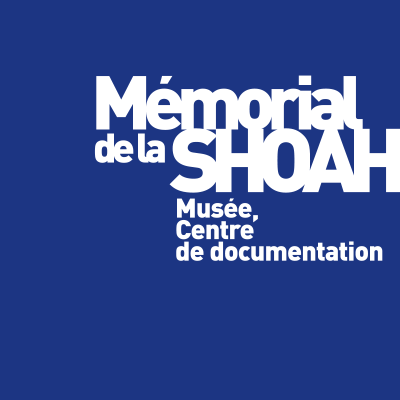Consult the online catalogue of the archives
The archives of the Documentation Center of the Shoah Memorial consist of more than 30 million archival documents, including a large number of originals bearing the signatures of the leaders of the Third Reich or those responsible for the deportation of Jews from France.
A lighter version of the catalogue of the Shoah Memorial archives, which does not include data relating to the private lives of the persons mentioned, is available on the portal of the Memorial Documentation Centre:
perform a search on the portal
The archives of the Documentation Centre
The German sources
– The general staff of the Fiers (MBF). The MBF, the German military administration in France, is divided into two main sections: the command staff and the administrative staff.
The archives of the command staff deal with the general collaboration between the occupation authorities and the government of Pétain, the persecution of the Jews, and the general policy of reprisals.
In the archives of the administrative service are documents concerning the influence of the occupation authorities on the French economy (interferences, spoliations, in particular economic aryanisations).
The German Embassy in Paris was very actively involved in anti-Jewish measures, as evidenced by the numerous telegrams and letters sent several times a day to Berlin by Abetz and Schleier (Minister Plenipotentiary of the German Embassy in Paris).
– The Gestapo in occupied France. The most important part of the collection consists of the archives of the anti-Jewish service of the Gestapo in Paris.
The collection consists of letters, telegrams, reports concerning internment, deportation and other measures against the Jews, such as the wearing of the yellow star, denaturalization as well as reprisals in general. There are also documents concerning the pressure exerted on Italy’s policy in the Italian occupation zone.
This collection was supplemented by documents on the Gestapo in France, held in the German Federal Archives (Bundesarchiv Koblenz). It gives us a true picture of the structures and activities of the Gestapo in France, and more particularly of the anti-Jewish service led by Dannecker, then by Rothke.
The archives of the Nuremberg trials
On the one hand, this is part of the entire documentation gathered for the investigation of the international military trial, as well as the trials conducted by the American military court.
A specific system of classification governs this important mass of archives. The main subdivisions of this classification are as follows:
- NO (Nazi Organization) Under this reference are gathered documents from all Nazi organizations, in particular on the role of the SS and the WVHA (central office of economy and administration SS)
- NOKW (Nazi 'Oberkommando der Wehrmacht') This group of documents relates to the activity of the German army.
- NG (Nazi Government) Documents illustrating the activity of state organizations related to those of Party organs.
- NI (Nazi Industry) Documents relating to the industry and financial institutes of the Third Reich.
The French sources
– Archives of the General Commissariat for Jewish Affairs. The CDJC has more than 20,000 documents emanating from the General Commissariat for Jewish Affairs (C.G.Q.J.), as well as the proceedings of the trial of its leaders.
– Professor Montandon’s archives. Montandon was an ethnologist and 'expert in racial issues' with the General Commissariat for Jewish Affairs. This fragmentary collection covers the period from 1924 to 1944 and concerns first his scientific work as an ethnologist, then his anti-Jewish propaganda activities from 1938.
– Institute for the Study of Jewish Questions. The C.D.J.C. retains most of the papers of this organization created in 1941 at the instigation of Dannecker. The fonds contains the correspondence of the secretary-general and describes all the activities of the Institute.
Other funds. The archives of the C.D.J.C. hold many other documents coming notably from the Armistice Services Directorate, the Police Prefecture, but also from Jewish organizations such as:
the Work of Aid to Children (O.S.E.), the Israelite Scouts of France (E.I.F.) the Federation of Jewish Societies of France (F.S.J.F.), the Representative Council of Jewish Institutions of France (C.R.I.F.), the Work of Protection of Jewish Childhood (O.P.E.J.), the Central Commission for Childhood (C.C.E.) ...
